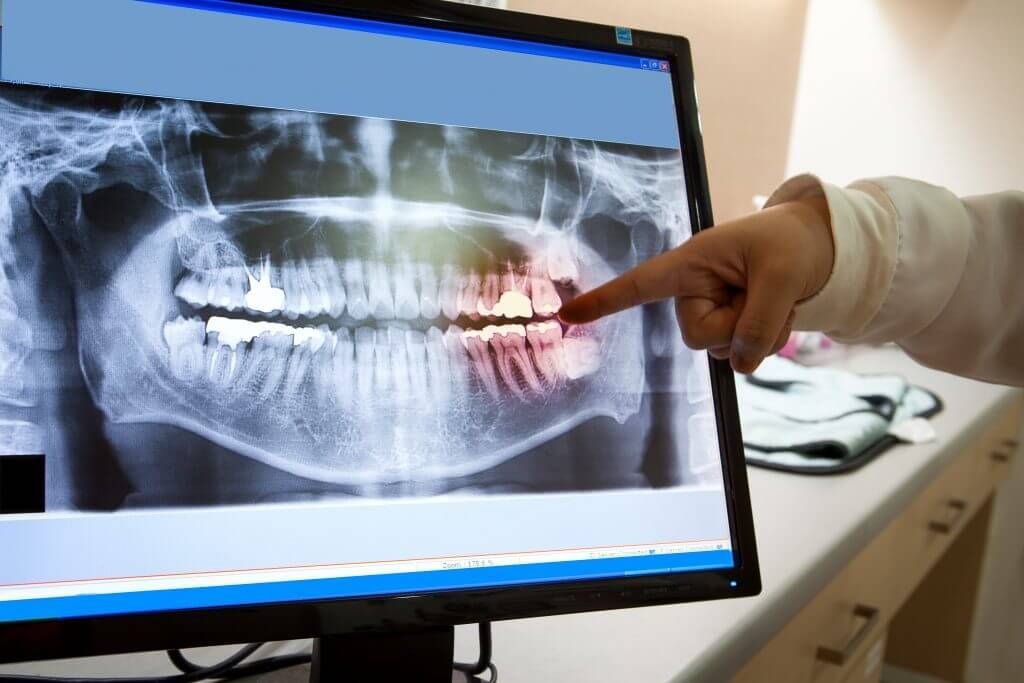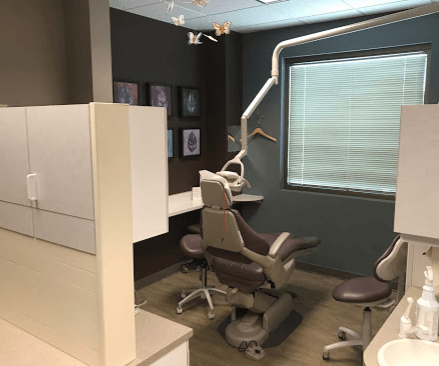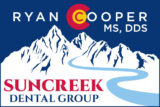
Our Services
Dental X-Rays in Littleton, CO
Dental X-Rays at Suncreek Dental
X-rays have been an integral part of dental care for decades, acting as the eyes beneath the surface of your oral health. At Suncreek Dental, we’ve embraced the evolution of this crucial diagnostic tool, ensuring our patients receive the most advanced care available.

The Evolution of Dental X-Rays
- Early dental X-rays were a significant breakthrough, yet they came with limitations. Today, we’ve transitioned from traditional film to digital radiography—a leap that has redefined dental diagnostics. Understanding the journey from the origins of X-ray technology to the state-of-the-art digital systems we use today can instill confidence in the safety and efficacy of our methods. Dental X-Rays may reveal many issues such as:
- Abscesses or cysts.
- Bone loss.
- Cancerous and non-cancerous tumors.
- Decay between the teeth.
- Developmental abnormalities.
- Poor tooth and root positions.
- Problems inside a tooth or below the gum line.
Detecting and treating dental problems at an early stage can save you time, money, unnecessary discomfort, and your teeth!
Types of Dental X-Rays
Not all dental issues call for a one-size-fits-all approach. Bitewings, panoramic, periapical, and occlusal X-rays each serve unique purposes, from highlighting cavities between teeth to providing a broad view of the jaw’s structure. These targeted imaging techniques allow us to tailor our care to your exact needs.
Here are some of the main conditions that digital radiographs can better expose:
- Small areas of decay
- Bone recession
- Tumors
- Fractures and trauma
- Positioning of the teeth
- Developmental irregularities
- Tooth positioning
Ensuring Safety During Your Dental Imaging
We understand that radiation can be a cause for concern. That’s why we employ advanced safety measures, like lead aprons and thyroid collars, and implement digital radiography, which significantly reduces exposure. To illustrate these safeguards, we provide clear, informative visuals that detail how we protect you during each X-ray session.
A Clearer View of Dental X-Rays
Our webpage wouldn’t be complete without showcasing what our safe and effective X-rays look like. From images of seamless X-ray procedures to the intricate details of dental X-rays unveiling hidden oral health issues, we offer a transparent look into our practice, assuring you of the quality and care we provide.

Hear from Our Patients
We proudly share testimonials from our patients whose early intervention, made possible by dental X-rays, has kept their smiles bright and healthy.
“Suncreek Dental’s digital X-rays caught a hidden cavity that could’ve turned into a real nightmare. Thanks to their team, I had a painless filling instead of a root canal!” – Emily R.
Benefits of Digital X-rays
Better Image Quality
X-rays need to be able to provide sufficient clarity and details in order for dentists to make a diagnosis and provide proper treatment. Fortunately, digital X-rays provide a much higher image quality than traditional X-rays.
This is because digital radiography machines have special software that can electronically manipulate images for improved definition. Images can be zoomed in or the contrast can be adjusted for a better view.
They also provide more than 200 shades of gray, which allows dentists to identify tiny fractures and other irregularities that could have been missed on film.
Higher Quality Care
Patients receive a higher quality of care when digital X-rays are used. Dental anomalies can be identified and treated quickly. On top of that, the risk of radiation exposure is minimal. In fact, digital X-rays reduce exposure by more than 75%.
Faster Processing Time
Traditional X-rays required you to wait for the film to develop. With digital X-rays, the images can be viewed instantly on a computer. This means less waiting, so appointments go faster. This saves time and increases productivity for both dentists and patients.
Quick Image Sharing
It’s easy to share digital dental X-rays. They can be shared via email or computer programs, allowing dentists to make quick consultations with other experts in the field without having to physically deliver the films.
Easy Image Storage
Digital X-rays are also easy to store. Because they are not physical in nature, there is less chance of misplacing them. Retrieving the images is easy, as you do not have to physically sort through film X-rays.
Relatively Easy to Use
Operating a digital X-ray machine is fairly easy and does not require much training. Over time, it becomes easy and straightforward compared to conventional film X-rays. Many dentists also consider it to be faster.
This means that dental assistants can help with getting patients ready to see the doctor. This means that you can get in, get help, and get back to work or play!
Schedule Your Dental X-Ray Today
Protecting your dental health begins with a clear picture of what’s happening below the surface. That’s why our radiography options focus on precision, safety, and patient comfort. Our specialized practice includes:
- Children’s Dentistry – Dental X-rays are invaluable in pediatric dentistry, allowing us to address developmental concerns early. Our techniques are tailored to children, ensuring their comfort and safety at every step.
- Digital X-Rays – Our digital radiography reduces radiation exposure by up to 90% compared to traditional methods. Quick, efficient, and detailed, digital X-rays offer a superior diagnostic tool while prioritizing your well-being.
Contact Suncreek Dental
Ready to experience top-tier dental care with minimal radiation exposure? Curious about how dental X-rays can benefit your oral health? Book Your Appointment Today and see firsthand how Suncreek Dental‘s digital X-rays provide clarity, safety, and peace of mind.
If you’re due for a dental check-up or concerned about a potential issue, don’t hesitate to reach out. Your oral health is our top priority, and we’re here to illuminate the path to your best smile.
Bite-wing X-rays (X-rays of top and bottom teeth biting together) are taken at recall (check-up) visits and are recommended once or twice a year to detect new dental problems.
